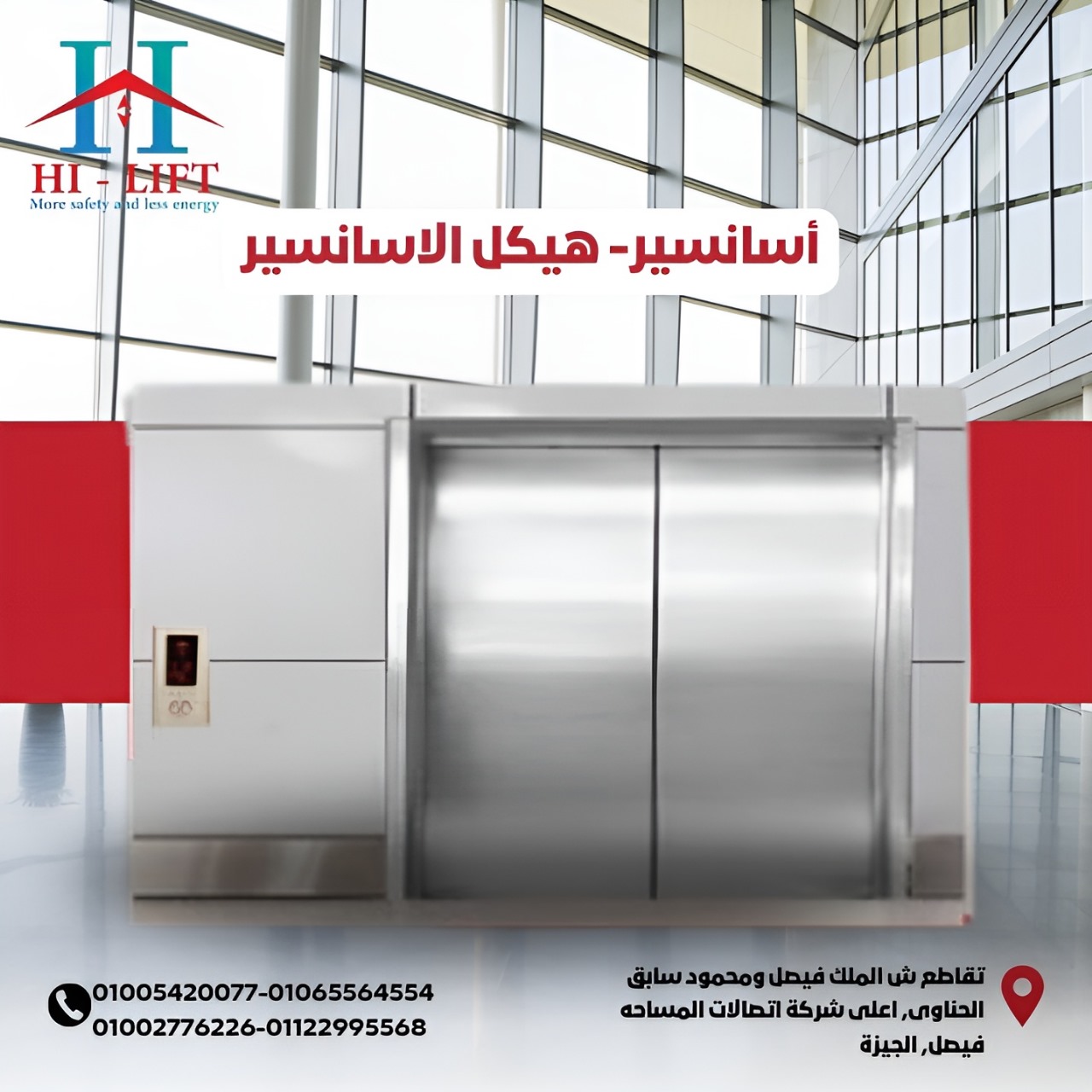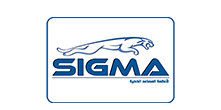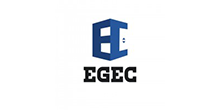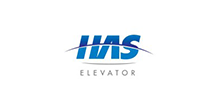أسانسير
تاريخ الأسانسير
تعتبر تكنولوجيا المصعد من أحد أهم الابتكارات التي غيّرت وسهّلت حياتنا في العصور الحديثة. يعود تاريخ اسنسير إلى قرون عديدة قبل أن يتطور إلى الجهاز الذي نعرفه اليوم. في البداية، كان اسانسير يعتمد على القوى البشرية حيث تم استخدامه لأغراض نقل البضائع في الأماكن مثل المناجم والمستودعات.(ليفت )
تطورت فكرته بمرور الزمن، وفي عام 1853 قام إيليا غرافستروم بتطوير
نموذج أولي للأسانسير الهيدروليكي. وفي عام 1857، قام إيميلوت أوتيس بإختراعه
بسلسلة من التروس والكبالي الذي يُعتبر النموذج الأول للأسانسير الآلي. هذا الاختراع
غيّر العالم وسمح ببناء المباني الشاهقة التي نراها اليوم.
من ثم، تطورت تكنولوجيا الخاصة به بسرعة، حيث تم تجهيزه بأنظمة تحكم آلية وتقنيات أمان متطورة، مما أسهم في توسيع استخدامه في المباني السكنية والتجارية. تاريخه يعكس التطور الهائل في مجال الهندسة والتكنولوجيا وكيف أصبح لدينا وسيلة سريعة وفعالة للانتقال بين الأدوار في المباني الحديثة. (تركيب اسانسير بالتقسيط )
هيكل الأسانسير
يتألف هيكله من مجموعة متعددة من المكونات التي تعمل بتنسيق دقيق
لتمكينه من الصعود والهبوط بين الأدوار بكفاءة وسلامة. يشمل الهيكل الرئيسي له
العناصر التالية:
- الكابينة: هي المكان الذي يقف به الركاب أثناء استخدام المصعد. تكون الكابينة عادةً مصنوعة من مواد قوية مثل الفولاذ المقاوم للصدأ ومزودة بأبواب أمامية تفتح وتغلق تلقائياً. ( تركيب المصاعد )
- الباب الخارجي: يوجد باب على الجهة الخارجية له في كل طابق.
هذا الباب يفتح ويغلق للسماح بدخول وخروج الركاب.
- المحرك: يعتبر المحرك محوريًا في عملية تحريكه.
عادةً ما يتم تثبيت المحرك في الجزء العلوي من المبنى ويعمل بمبدأ تحويل
الطاقة الكهربائية إلى حركة ميكانيكية ترفع وتخفض الكابينة.
- الحبال والكبالي: تُستخدم حبال أو كبالي قوية لربط الكابينة بالمحرك. تعمل هذه الكبالي على رفع وخفض الكابينة بسلاسة وبأمان.(تركيب لمصعد )
- نظام التوجيه والتوقف: يشمل
هذا النظام العديد من الأجزاء الميكانيكية والكهربائية التي تتيح له التوقف
بسرعة وأمان عند الوصول إلى الطابق المطلوب وتوجيه الكابينة بدقة إلى الطابق
المستهدف.
- لوحة التحكم: توجد لوحة تحكم داخل الكابينة تسمح للركاب بتحديد الطابق الذي يرغبون في الوصول إليه. تحتوي هذه اللوحة على أزرار تحكم وعرض رقمي لعرض الطابق الحالي والمزيد من المعلومات.(تعليمات استخدام المصاعد )
هذه المكونات تعمل معًا بتنسيق دقيق لضمان حركة الأسانسير بأمان
وكفاءة. تكنولوجيا المصعد تطورت بمرور الزمن، مما أدى إلى تطبيق تقنيات حديثة مثل
الأنظمة الذكية وتكنولوجيا التحكم الآلي، مما سهّل استخدامه وزاد من مستوى السلامة
والراحة.
أهمية الأسانسير في العمارة
تُعتبر التكنولوجيا الحديثة له أحد العناصر الأساسية في مجال العمارة الحديثة، وذلك لأسباب عديدة تجعلها جزءًا لا يتجزأ من التصميم والتخطيط العمراني للمباني. يُعزى العديد من الجوانب الإيجابية للأسانسير إلى الأهمية التي يحملها في هذا السياق.(سعر جهاز الطوارئ للمصاعد )
أولًا، يساهم الاسناسير بشكل كبير في زيادة استغلال مساحات المباني
الرأسية. بفضل وجود الاسانسير، يمكن بناء مباني ذات عدة طوابق دون الحاجة إلى
التضحية بالمساحة الأرضية، مما يزيد من كفاءة استخدام الأراضي في المناطق الحضرية
المزدحمة.
ثانيًا، يسهم في تحسين الراحة وتوفير الوقت للسكان والزوار. يسمح بالوصول إلى الأماكن بسرعة وبسهولة دون الحاجة إلى الصعود والنزول بالسلالم، وهذا يعزز من راحة الحياة اليومية للأفراد ويزيد من كفاءتهم. (سعر جهاز الطوارئ للمصاعد في مصر )
ثالثًا، يعزز من قابلية الوصول للأشخاص ذوي الاحتياجات الخاصة وكبار
السن. يمكنهم الاستفادة منه للتنقل بسهولة دون عراقيل، مما يعزز من شمولية المباني
ويسهم في تحقيق المساواة في الوصول.
باختصار، يُعد عنصرًا أساسيًا في العمارة الحديثة يسهم في تحسين كفاءة
الاستخدام وراحة الحياة في المباني. يتيح للمباني أن تكون أكثر مرونة وأمانًا،
ويسهم في توفير المزيد من الفرص لتصميم المباني ذات ارتفاعات متعددة، مما يخدم
احتياجات مجتمعنا المتنوعة والمتطورة.
فولت 220 - 3 فاز: تقنية توفر الطاقة
تُعدّ فولت 220 - 3 فاز إحدى الأنظمة الكهربائية الهامة التي تستخدم
على نطاق واسع في معظم أنحاء العالم. يتميز هذا النظام بجهد كهربائي يبلغ 220
فولت، ويعمل بثلاثة موصلات رئيسية أو "فازات" تعمل بشكل متزامن. يُستخدم
هذا النظام في العديد من التطبيقات، بما في ذلك الصناعة، والمباني التجارية،
والمنازل.
تُعدّ فولت 220 - 3 فاز مهمة للغاية لأنها توفر توزيع الكهرباء بكفاءة
وثبات. وبفضل وجود ثلاث فازات، يمكن للنظام توفير طاقة أكبر وتيار كهربائي أعلى،
مما يجعله مثاليًا لتشغيل المعدات الثقيلة والأنظمة الصناعية. كما يُستخدم هذا
النظام في الأماكن التي تتطلب مستوى عالي من الكفاءة والاستدامة، حيث يساعد في
تقليل الفاقد وتوفير الطاقة.
بالإضافة إلى ذلك، فإن فولت 220 - 3 فاز يُستخدم في مجالات متنوعة مثل تشغيل مكيفات الهواء، والمعدات الكهربائية الصناعية، وأنظمة تكييف المياه الساخنة. يتيح هذا النظام للأنظمة الكهربائية العمل بكفاءة عالية وتلبية احتياجات متنوعة، مما يجعله جزءًا أساسيًا في توفير وتوزيع الطاقة الكهربائية بطريقة فعالة وموثوقة. (سعر كالون باب المصعد )
المصعد كم امبير
التيار الكهربائي الذي يستهلكه أسانسير يعتمد على القدرة والتصميم
الكهربائي للمصعد نفسه، والتي تتفاوت بناءً على النوع والحمولة والاستخدام. على
سبيل المثال، مصاعد الصغيرة المستخدمة في المنازل عادةً ما تستهلك تيارًا أقل
مقارنة بالمصاعد الصناعية الكبيرة المستخدمة في المباني الشاهقة.
لمعرفة التيار الكهربائي الدقيق الذي يستهلكه مصعد معين، يجب الرجوع إلى البيانات الفنية المقدمة من الشركة المصنعة للمصعد أو الاستشارة مع محترفي الكهرباء. عادةً ما تقدم المصاعد معلومات حول الجهد الكهربائي والقدرة (واط)، ومن ثم يمكن حساب التيار بسهولة باستخدام القانون الكهروكيميائي البسيط الذي ينص على أن التيار (أمبير) يساوي القدرة (واط) مقسومة على الجهد (فولت).
بشكل عام، يمكن القول أن للمصاعد الصغيرة في المنازل تستهلك تيارًا أقل عادة بين 10 إلى 20 أمبير، بينما المصاعد الصناعية الكبيرة قد تحتاج إلى تيار يصل إلى مئات الأمبير. إذا كنت بحاجة إلى تحديد التيار الدقيق لمصعد معين، يجب مراجعة البيانات الفنية الخاصة به أو الاتصال بخبير كهربائي مؤهل. (صور مصاعد )
انواع الروزتات
تعتبر الروزتات (الروزيتات) نوعًا من الأحجار الكريمة الثمينة
والجميلة التي تعزز من جمال المجوهرات وتمتاز بتنوعها وتوفرها بألوان وأشكال
مختلفة. هنا فقرة تستعرض بعض الأنواع الشهيرة من الروزتات:
1. الزمرد: تعتبر الروزتات الزمردية واحدة من أندر وأغلى أنواع الروزتات. تتميز بلونها الأخضر الزاهي واللامع، وتُعتبر رمزًا للثروة والنجاح. الزمرد هو نوع من أنواع البيريدوت ويُستخدم عادة في صنع المجوهرات الفاخرة. ( تعليمات استخدام المصعد )
2.
الياقوت: الياقوت
هو نوع آخر من الروزتات المشهورة، وهو معروف بألوانه المتنوعة، ويمكن أن يكون
أحمرًا، أو أصفر، أو أزرق، أو وردي، وحتى شفافًا. يُعتبر الياقوت رمزًا للقوة
والشجاعة، وغالبًا ما يُستخدم في المجوهرات الراقية.
3. الألماس: على الرغم من أن الألماس أحجار كريمة تعتبر ألمع من الروزتات الأخرى، فإنها تأتي أيضًا في فئة الروزتات. يُعتبر الألماس رمزًا للأبدية والجمال ويُستخدم بكثرة في تصميم المجوهرات الزفافية.
4.
العقيق: العقيق
هو نوع آخر من الروزتات، وهو معروف بألوانه المتنوعة وأنماطه المميزة. يُعتبر
العقيق رمزًا للحماية والتوازن ويُستخدم غالبًا في تصميم الأساور والخواتم.
5.
الزبرجد: الزبرجد
هو نوع من الروزتات ذو لون أخضر داكن مشرق، وهو شديد الجمال والندرة. يمتاز بمظهره
الفريد ويُستخدم في صنع المجوهرات والزينة.
هذه هي بعض الأنواع البارزة من الروزتات، وتجدر الإشارة إلى أن هناك المزيد من الأنواع والأصناف التي تختلف في لونها ومظهرها، وتستخدم لإضفاء الجمال والرمزية على المجوهرات والزينة. (صيانة مصعد )
تقنيات السلامة في الأسانسير
تقنيات السلامة فيه تعد أمرًا بالغ الأهمية لضمان سلامة المستخدمين
أثناء استخدام هذه التكنولوجيا. تمثل المصاعب المحتملة أثناء تشغيله وصولًا إلى
مكانهم بأمان قضية حاسمة تتطلب اعتماد تقنيات متقدمة للوقاية والتحكم. تتضمن تلك
التقنيات ما يلي:
- أنظمة التوقف الاضطراري (Safety Brakes): هذه الأنظمة تُعتبر السلطة الحماية الأولى ضد حوادث السقوط. تعمل
على إيقاف المصعد عند حدوث خلل أو انقطاع التيار الكهربائي، وهذا يمنع
الكابينة من الانزلاق بسرعة نحو السفل.
- أنظمة الكشف عن الحمل الزائد: تُستخدم
لكشف أي زيادة غير معتادة في الحمل داخل الكابينة. إذا تم اكتشاف حمل زائد،
فإن النظام سيقوم بإيقاف الحركة وإصدار إنذار.
- مستشعرات الأمان
(Safety Sensors): تُستخدم
هذه المستشعرات للكشف عن وجود الأشخاص أو الأجسام داخل باب الأسانسير. إذا تم
اكتشاف شيء في المسار، سيتوقف الأسانسير عن الحركة لمنع الحوادث.
- نظام التحكم الآلي
(Control Systems): يستخدم
نظام التحكم للمراقبة المستمرة للأداء والحركة الصحيحة له. إذا حدث خلل في
الأداء أو في التحكم، سيتم تنفيذ إجراءات سلامة تلقائية.
- أنظمة الاتصال الطارئ: تساهم
هذه الأنظمة في التواصل الفوري بين المستخدمين داخل المصعد والأشخاص المختصين
بالصيانة أو الإنقاذ في حالة الضرورة.
- أنظمة إنذار الحريق: تُضمن
وجود أنظمة إنذار الحريق داخل المصعد أنه في حالة اندلاع حريق في المبنى،
يمكن إخلاء الأشخاص بسرعة وبأمان.
إن توظيف هذه التقنيات والأنظمة يجعل استخدامها أكثر أمانًا، ويساهم في تقليل مخاطر الحوادث والإصابات. تمثل هذه التقنيات جزءًا أساسيًا في صناعتها للحفاظ على سلامة الركاب وتوفير الثقة في استخدام هذه التكنولوجيا في مختلف البيئات.
جهاز تصحيح الفازات
جهاز تصحيح الفازات، المعروف أيضًا باسم مُصحّح العامل الطاقة أو مصحح
العامل، هو جهاز أساسي في مجال الكهرباء يُستخدم لتصحيح أو تحسين العامل الطاقة (Power Factor) في أنظمة الكهرباء. العامل الطاقة يشير إلى كفاءة استخدام الطاقة
الكهربائية في دوران المعدات والأجهزة الكهربائية، وتحديداً كيفية توجيه التيار
الكهربائي بين التيار الجهد (Voltage) والتيار
الحالي (Current) في دائرة
كهربائية.
جهاز تصحيح الفازات يُستخدم لضبط التيار الكهربائي بحيث يكون التأخير بين التيار الجهد والتيار الحالي على مستوى مقبول. ذلك يساعد على تحسين الكفاءة والاستدامة في الاستخدام الكهربائي ويقلل من الفاقد في الطاقة.



















